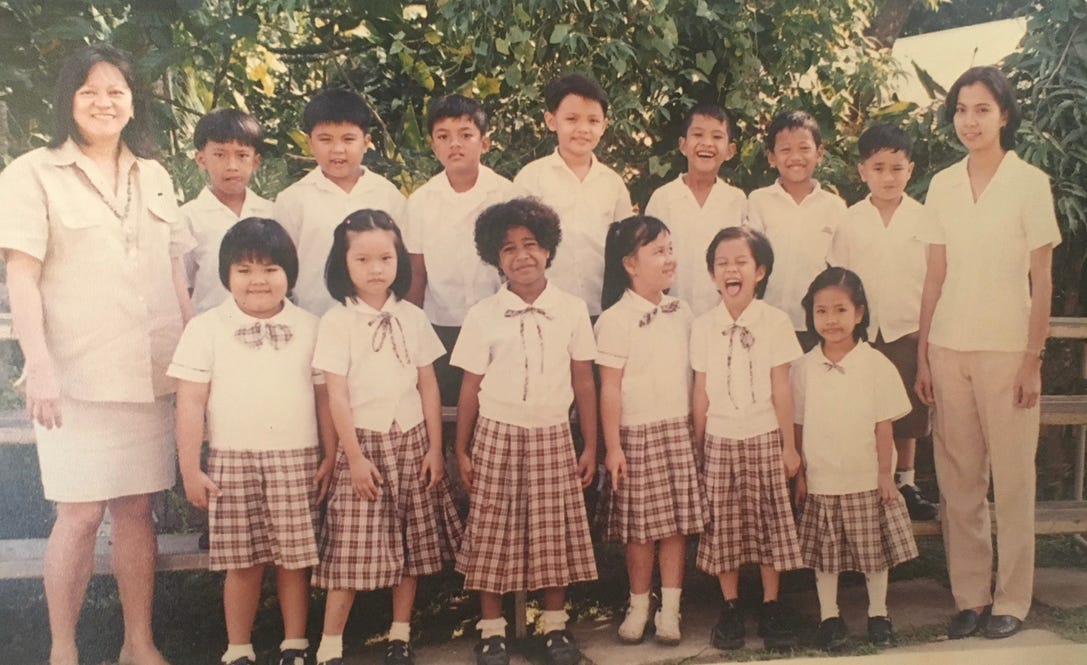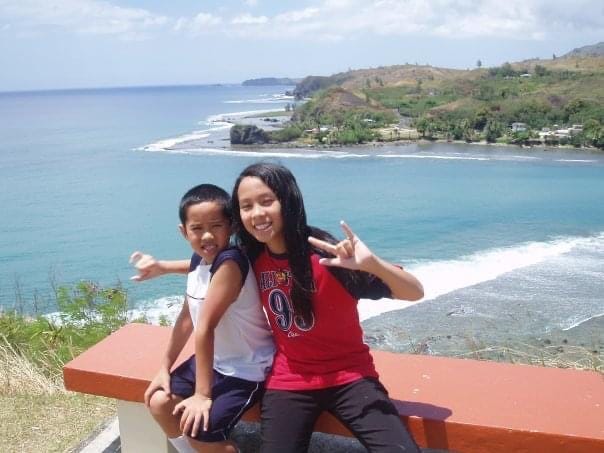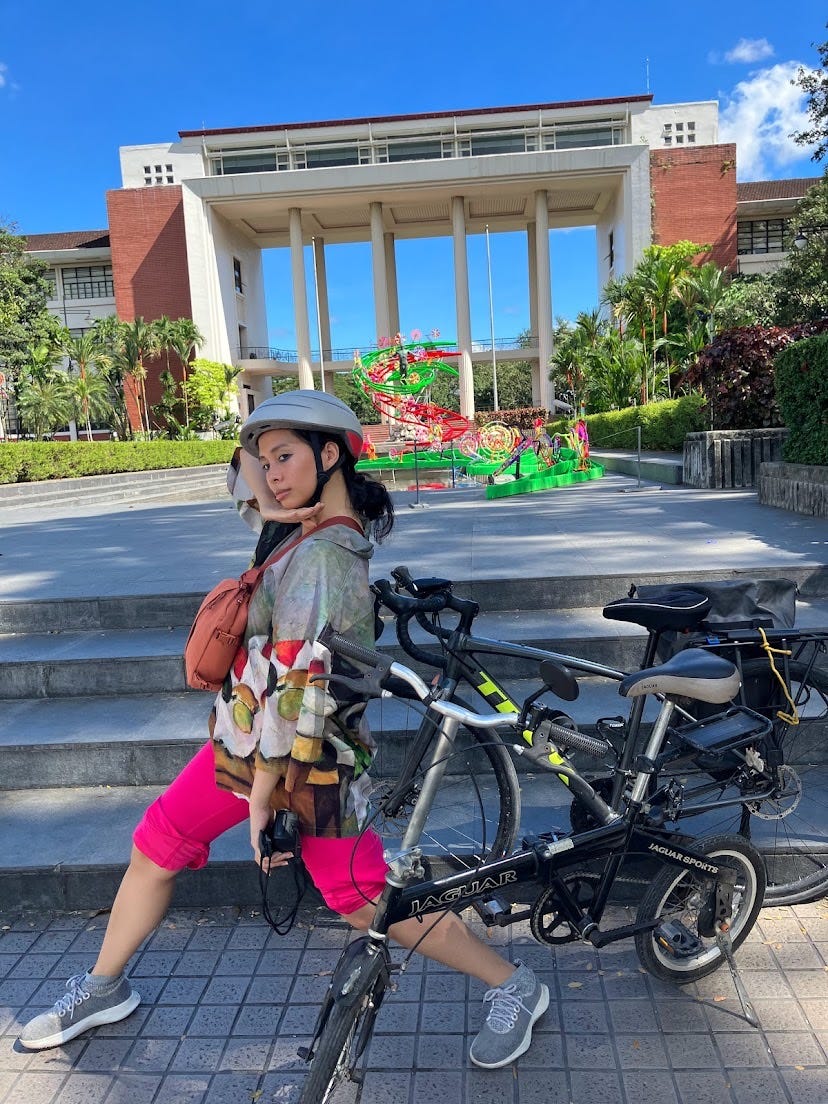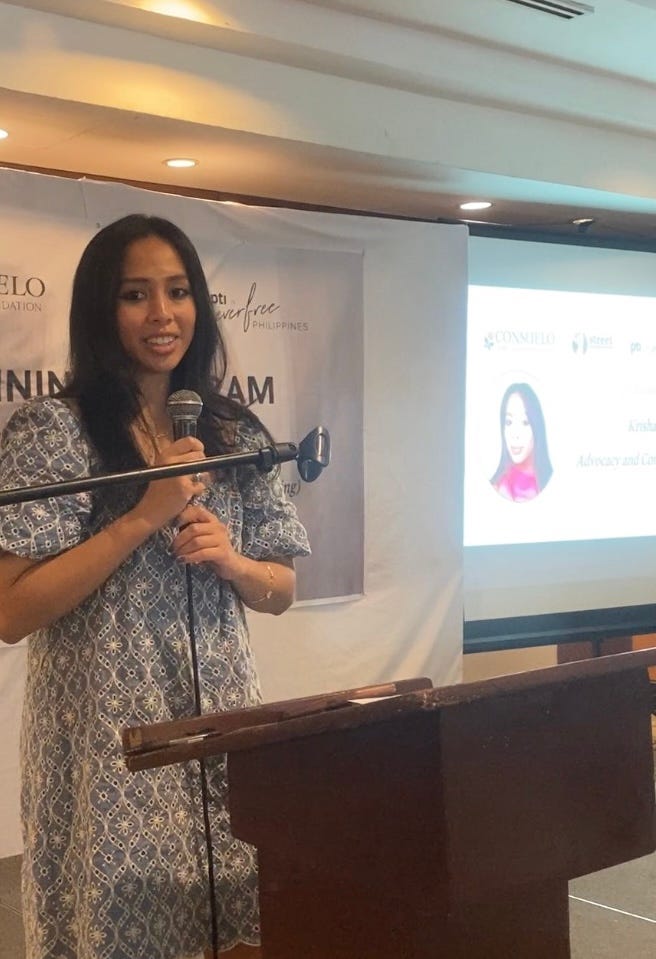Ramblings of an Expat: Humbling the Fil-Am
Contributor Krisha Mae Cabrera reflects on her peripatetic upbringing and what it really means to be a Filipino-American activist
I once made an offhand remark to my cousin about growing up in the Philippines.
“You didn’t grow up in the Philippines,” she interjected bluntly.
She was right— I didn’t. But hearing it out loud felt like a wash of cold water, an icy critique almost. But I didn’t not grow up in the Philippines. My parents were migrant laborers. They met in Saipan, an island in the Northern Marianas Islands with a total area of 120 square kilometers. The first few parts of my life were a messy blur between the Philippines and Saipan, but I was born in the Philippines and there was a sort of back and forth situation between my dad working abroad and coming back until we were able to join him in Saipan. I’d say I “grew up” in the Philippines just until the second grade. But due to the proximity between our little island and the Motherland, I experienced long summers at Lola’s (enough to get bullied every day by the neighbor kids who called me matakaw), Christmases in Laguna, and even a random semester at a school in Quezon City. This went on even when we moved to Guam— again it was a short flight, just a slightly bigger island.

I spoke Tagalog. I watched the Filipino dub of Meteor Garden. A large percentage of my classmates in Guam were also Filipino, so I never had a stinky-lunchbox story – considering we all had the same lunch of rice and grilled bangus.
We moved to California when I was in the 7th grade. At that point the Philippines was too far, the flights too expensive.
At 28, I’m (almost) grown up now. I got lucky enough to have a job that lets me work remotely and travel as part of our fieldwork as well. I guess I never got over the life of moving from place to place as a kid. Now, I’m almost never in one place longer than a few months at a time.
Last year my work took me back to the Philippines. Our NGO (non-governmental organization/internationl nonprofit), EverFree, is an international org addressing modern slavery. It was my first big stint of travel with EverFree, long-awaited after the Covid Era. Around my coworkers, I felt like a true balikbayan. Damn straight, “Ang Huling El Bimbo” is my karaoke song. Oh sure, let me order for us in Tagalog. Why yes, they did grant me Balikbayan entry at immigration.
When everyone left, I stayed in Manila for a while to be with family and take a few meetings for my org. I spent a lot of time at the University of the Philippines, Diliman campus to meet with professors and researchers. The Commission on Human Rights was also on the campus. I had interned there a few years ago, so I went back to take meetings and to catch up with friends.
I had been around a lot of activist Fil-Ams in California. I am an activist Fil-Am in California. But something always struck me about the glaring disparity between Fil-Am activism and local Filipino activism. The former always seemed to grasp clumsily, sometimes shallowly, towards the latter— reiterating the same templates on colonial mentality and colonization in the same breath as making ube and lumpia a personality type. Don’t get me wrong, discourse on colonization is vital towards decolonization. But to do so without also looking towards contemporary, on-the-ground resistance movements in the Philippines, from marginalized groups with lived experiences in the Philippines, would be grossly ignorant.
Yes, we do need to heal our collective colonial scars. Yes, Spanish colonization has warped our minds and the USA has further cemented colonial mentality. I’m being simplistic here, but anyone who’s been in a Fil-Am org even just a couple of years will often hear the exact same terms delivered over and over again. Do Fil-Ams ever go beyond?
Of course, some do— there are groups with direct ties to activists on the ground in the Philippines. Most of these groups are official NGOs or branches of Philippine organizations. But for the collective body of young Fil-Am activists, there’s a not unnoticeable disconnect.
Once, a photo of Waldy Carbonell, a journalist and general badass (Duterte of extra-judicial-killing-and-insecure-manhood notoriety once challenged him to a duel), went viral. In the photo, Carbonell protested against China’s bullying by burning the Chinese flag in front of China’s embassy with PHILIPPINES NOT FOR SALE! written on the pavement. This is an act of anti-imperialist, anti-colonialist activism. In fact, activist groups and human rights defenders in the Philippines have been very vocal and driven in standing up to China’s intimidation, its flouting of international arbitration, and its constant posturing.
And yet—
Fil-Ams often fall silent on this matter specifically. I’d wondered why. Perhaps the mental gymnastics involved goes like this: the USA and Spain are the West and we must hold the West accountable. China is not the West, therefore the colonial narrative doesn’t apply. I’d brought this up to another Fil-Am once. “The USA is imperialist,” they replied as though that answered my question. As though being as anti-West at all costs kept them on the “acceptable” part of decolonization, even if it meant failing to hold an imperialist from the East accountable,.
That was a lengthy tangent just to provide one example. But should a Fil-Am enter a room of Filipino human rights activists, I can guarantee that even 15 minutes of mingling would be enough to illuminate issues hardly brought to light at university Pilipino Cultural Night. I say all this not to be preachy or to shame my fellow Fil-Ams— my fellow young adults who have been passionate and eager to reach towards their culture beyond a childhood of assimilation. I say all this because I myself was humbled and enlightened by that 15 minutes of mingling.
At an event for law students, I spoke with a couple guests from the National Union of Peoples' Lawyers (NUPL). They joked about how many times they’d been arrested. The NUPL, an organization of human rights lawyers offering pro bono services to marginalized groups, often elicits the government’s ire as they work ardently against state-sanctioned human rights abuses, arbitrary arrests, and extrajudicial killings. Their very existence resists state-led violence, working through a time in which a record high number of lawyers— most of whom defended victims of human rights violations— were killed during the Duterte administration. 15 minutes with two NUPL lawyers illustrated for me the current landscape of Philippine human rights activism, the lesser known issues that had yet to be translated into Fil-Am discourse— what should journalists, lawyers, poverty alleviation movements, and underserved communities worry about next? They gave me the Cliffsnotes.
Often in these conversations, there would be moments when I’d be asked if I’d heard about an issue or a person. Often, I’d say no. This often gave rise to my Fil-Am shame of disconnection, that feeling of unbelonging and unknowing. But my cousin was right. I didn’t grow up in the Philippines. I haven’t been around for its human rights movements. But the least I can do is listen to the ones who have.
About the author: Krisha Mae Asinas Cabrera is a Filipino-American expat originally from Laguna, Philippines who also grew up in Saipan, Guam, and California. She graduated from UC Berkeley with degrees in English and South & Southeast Asian Studies. She then earned her Juris Doctor from USC Gould School of Law, focusing on international human rights. She leads Advocacy and Communications for EverFree, an international NGO focusing on modern-day slavery.










This piece resonated with me so deeply. Thank you. <3 <3